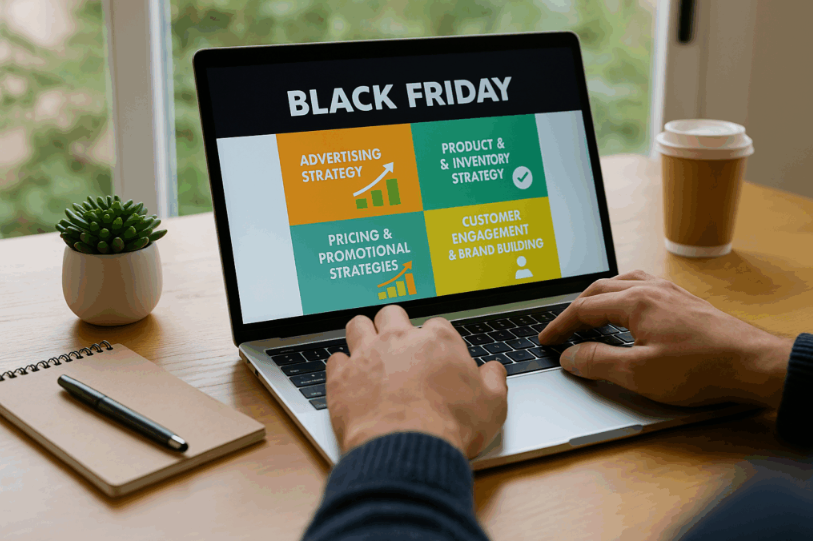Amazon’s 2025 Black Friday and Cyber Monday promotion is set to last for 12 days, with Green Label sellers enjoying new

In 2025, the cross-border e-commerce industry will once again embrace its most crucial year-end event: Amazon’s Black Friday and Cyber Monday (BFM) promotions. Amazon recently confirmed that this year’s promotion will run from November 20th to December 1st, a total of 12 days. This marks another strategic move by the platform to extend its sales and enhance conversion rates.
At the same time, Amazon emphasized that Green Label sellers who performed well during the autumn promotion will receive further traffic support and conversion advantages during BFM. This signaled the platform’s strategic intention to accelerate green transformation in the global e-commerce market and created new growth opportunities for cross-border sellers.
1. Black Friday and Cyber Monday: The Strongest Battle of the Year for Cross-Border E-Commerce
As the most influential shopping festival in the European and American consumer markets, Black Friday and Cyber Monday’s commercial value is self-evident. According to eMarketer data, US e-commerce sales during Black Friday and Cyber Monday in 2024 will exceed $39 billion, an 8.3% year-over-year increase, with Amazon retaining over 40% of the market share.
Compared to the shorter 3-5-day promotions of previous years, Amazon has extended its promotional period to 12 days this year. The objectives are clear:
- Extending consumers’ shopping window and reducing the impact of “explosive buying” on logistics and warehousing;
- Increasing sellers’ marketing space, allowing more small and medium-sized businesses to keep up;
- Better competition with offline retailers, fostering a “continuous exposure – batched ordering – repeat purchases” rhythm.
This means that Black Friday is no longer a “one-time deal,” but a protracted campaign spanning nearly two weeks. For sellers, scaling their operations, allocating advertising budgets, and developing inventory and shipping strategies will present new challenges.
2. Green Certification (Amazon Green Label): The New Key to Traffic
During this year’s autumn sales promotion, sellers with the Amazon Green Label (Sustainability Certification) performed exceptionally well:
- Sales increased by 43%-76% year-on-year, without any additional advertising costs;
- Advertising costs decreased by 40%, and ACOS performance improved significantly;
- Gross merchandise volume increased by an average of 13.3%, with sales increasing by 12.5%;
- Price premiums increased by 10%-20%, and repurchase rates were 25% higher than those of standard products.
The advantages of the Green Label are clear:
- 22 dedicated traffic portals: Covering key scenarios such as search recommendations, homepage display, and promotional pages, Green Label products naturally enjoy higher exposure.
- Consumer awareness advantage: Eco-friendly consumption is becoming a mainstream trend in Europe and the United States, and green labels directly impact conversion rates.
- Additional platform support: During Black Friday and Cyber Monday, Green Label sellers will receive an additional 30% exposure, with an estimated 18% increase in conversion rates and a 15% reduction in CPC.
In other words, green certification is no longer just a “brand image label” but a real traffic and profit lever.
3. Why does Amazon prioritize green certification?
In line with global consumer trends
In the European and American markets, environmental awareness has become deeply ingrained in consumers’ minds. According to Nielsen research, 66% of consumers are willing to pay a higher price for sustainable products, with younger generations (Generation Z and Millennials) showing a higher level of acceptance.
Aligning with policy trends
Both the EU Green Deal and California’s environmental regulations require e-commerce platforms to assume greater responsibility for sustainable development. By promoting green certification, Amazon can both meet policy requirements and gain a competitive advantage.
Strategic transformation of the platform itself
Amazon has publicly stated its goal of achieving carbon neutrality by 2040 for many years, and green e-commerce is one of its strategic paths. The platform will inevitably guide sellers to accelerate their green transformation by allocating traffic and resources.
Therefore, sellers who are the first to achieve green certification will not only gain immediate traffic support but also potentially establish a long-term competitive advantage over the next 3-5 years.
4. How can sellers cope with the Black Friday competition?
Faced with a promotional period extending to 12 days, sellers need to comprehensively upgrade their operational strategies.
1. Advertising Strategy: Shift from “Burst” to “Rhythmic”
The traditional Black Friday strategy involves a burst of advertising during the first two days, but this year a “stepped” strategy should be adopted: early testing, mid-term volume expansion, and subsequent additional promotions.
Budget allocation can be split between 30%-50%-20% to ensure a consistent cadence. Focus on promoting green-labeled products, leveraging organic platform traffic to maximize advertising effectiveness.
2. Product and Inventory Strategy: Prioritize Green Certification
If you already have green-certified products, prioritize stocking them and emphasize environmentally friendly selling points in your listings.
Sellers who haven’t yet obtained the green label should apply for relevant certification as soon as possible to at least gain an advantage in the mid- to long-term competition.
Regarding inventory, it’s recommended to complete warehousing 2-3 months in advance to avoid stockouts due to holiday logistics congestion.
3. Pricing and Promotional Strategies: Focus on Premiums and Repeat Purchases
Data shows that green-label products have a 10%-20% premium potential. Therefore, sellers don’t need to blindly engage in price wars; instead, they should enhance their ability to command premiums through narrative and value marketing.
Also, during Black Friday, focus on bundling and cross-selling to increase repeat purchases.
4. Customer Engagement and Brand Building
Big sales are not only a window for boosting sales, but also an opportunity for brand building.
Sellers are advised to leverage the traffic generated during the big sales period to collect more reviews and user feedback, preparing for new product iterations in Q1 and Q2.
Use social media to simultaneously promote green concepts and build a differentiated brand image.
5. Opportunities and Challenges
Amazon’s 2025 Black Friday and Cyber Monday sales will undoubtedly be a crucial battle for cross-border sellers. Unlike previous years, this year’s competition is no longer simply a “price war” or “advertising war,” but a comprehensive competition for traffic and sustainable development strategies.
The opportunities lie in:
- Longer promotion periods give sellers more room for maneuver;
- Green certification brings significant traffic and profit dividends;
- Consumers’ environmental awareness is increasing, leading to more stable market demand.
The challenges lie in:
- Intensified competition among sellers; sellers without green certifications are likely to be at a disadvantage in terms of traffic allocation;
- Longer promotion periods place higher demands on capital, inventory, and supply chain management;
- Advertising strategies require refinement, otherwise they can be depleted too quickly.
6. Conclusion
Black Friday and Cyber Monday are both an annual celebration for cross-border e-commerce and a litmus test for sellers’ strategies and execution.
Driven by both platform guidance and market trends, green certification has become a core factor in future competition.
For Chinese cross-border sellers, those who can lead the green transformation will have an advantage in this year’s Black Friday campaign.
Black Friday in 2025 is destined to be not just a competition for traffic, but also a test of environmental protection and sustainable strategies.










